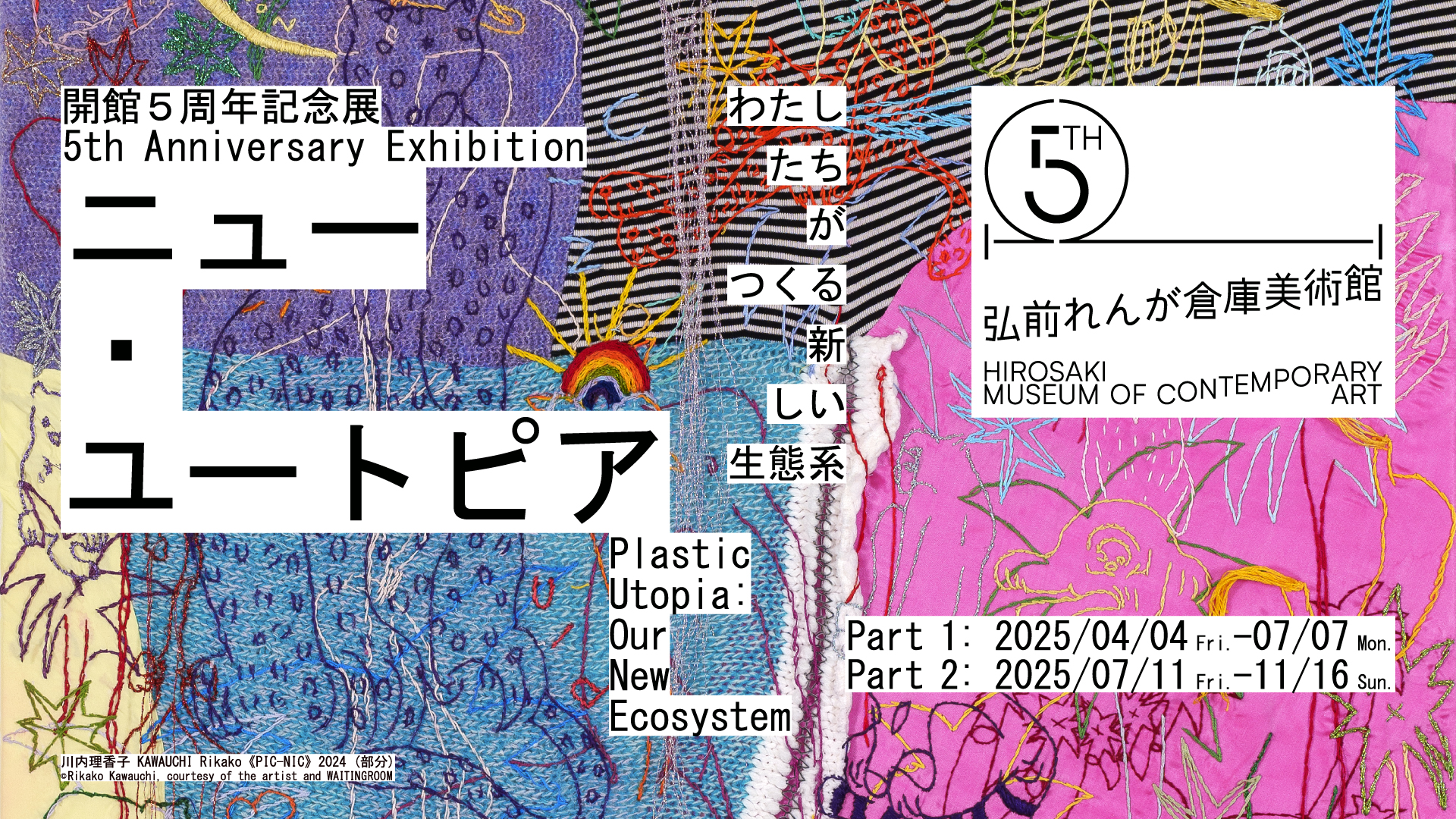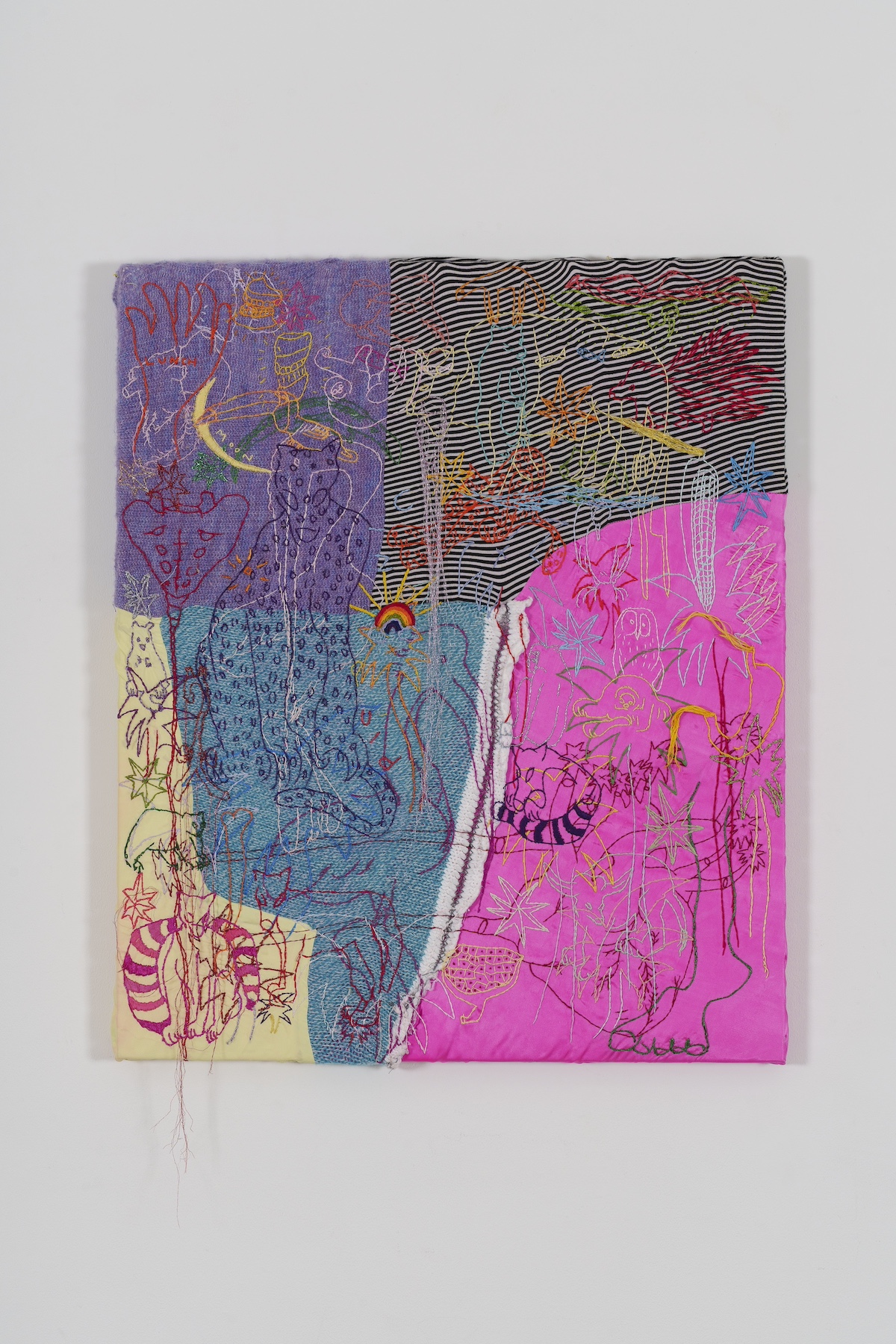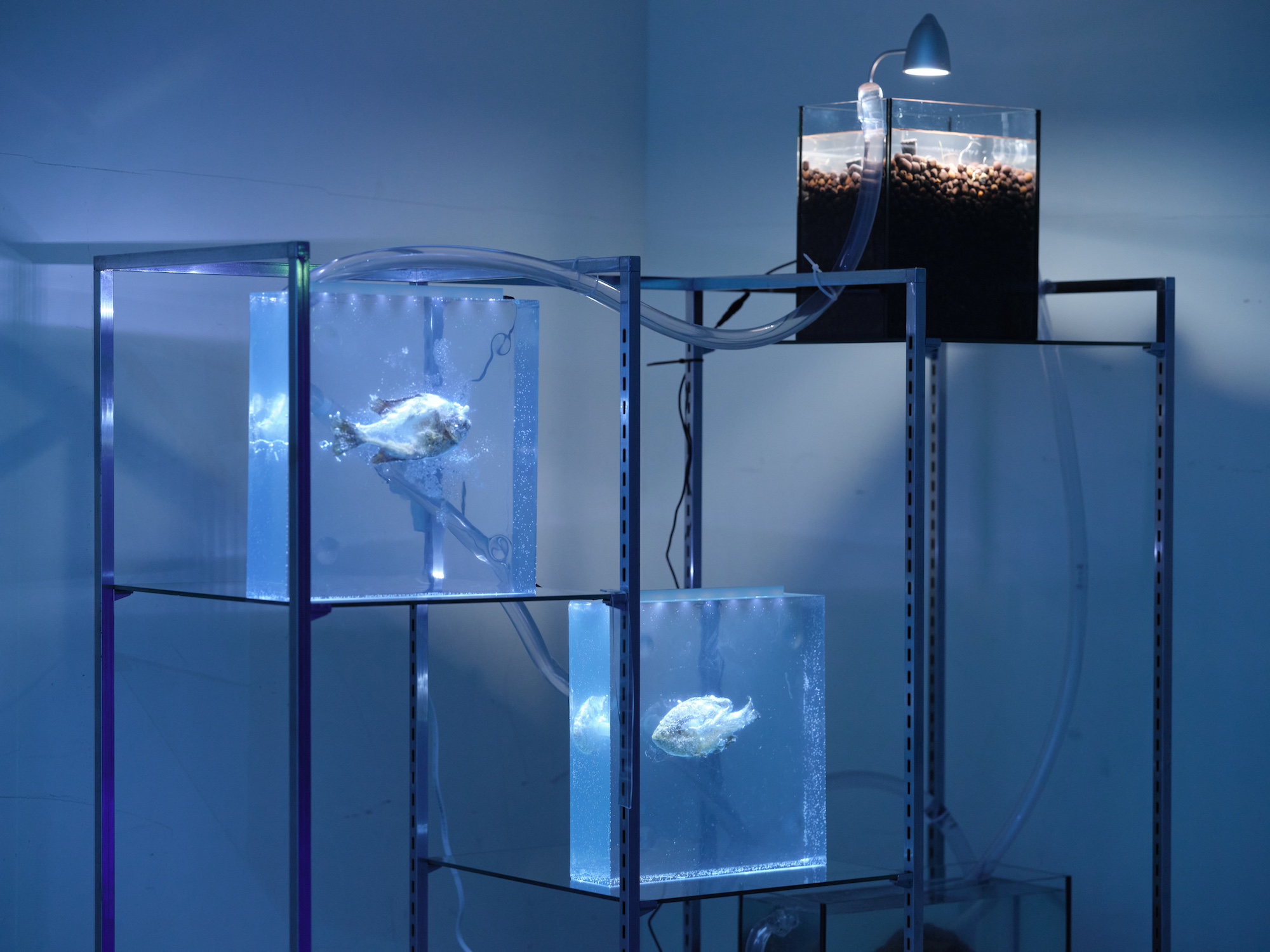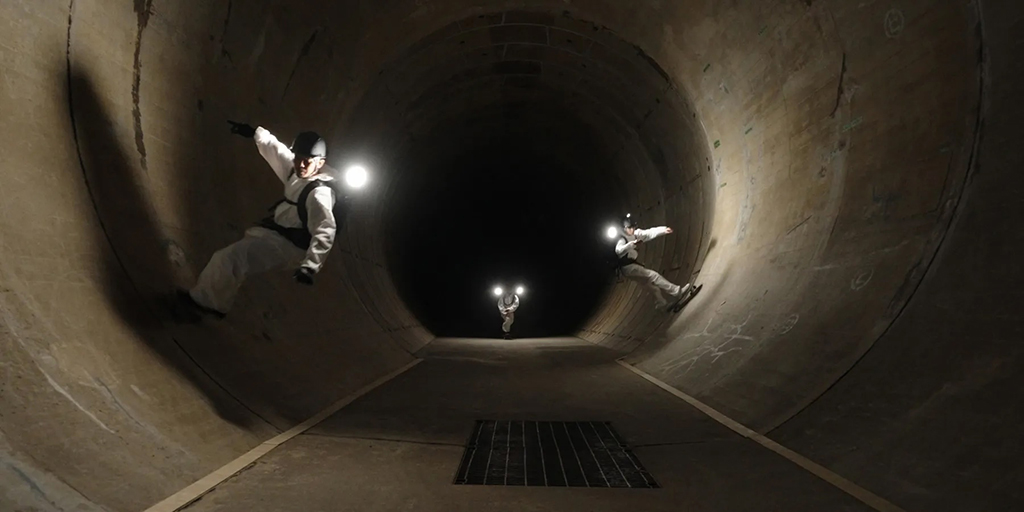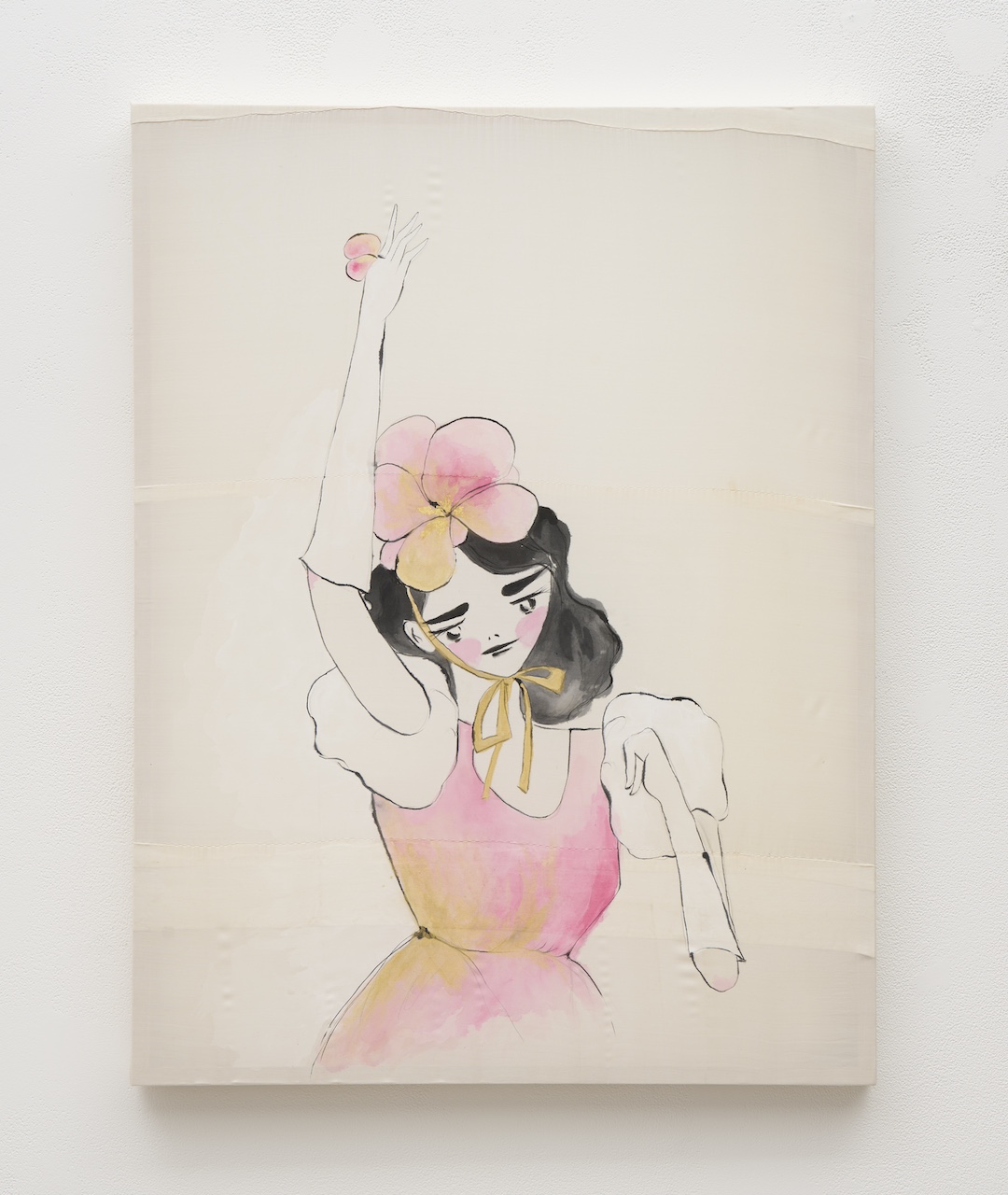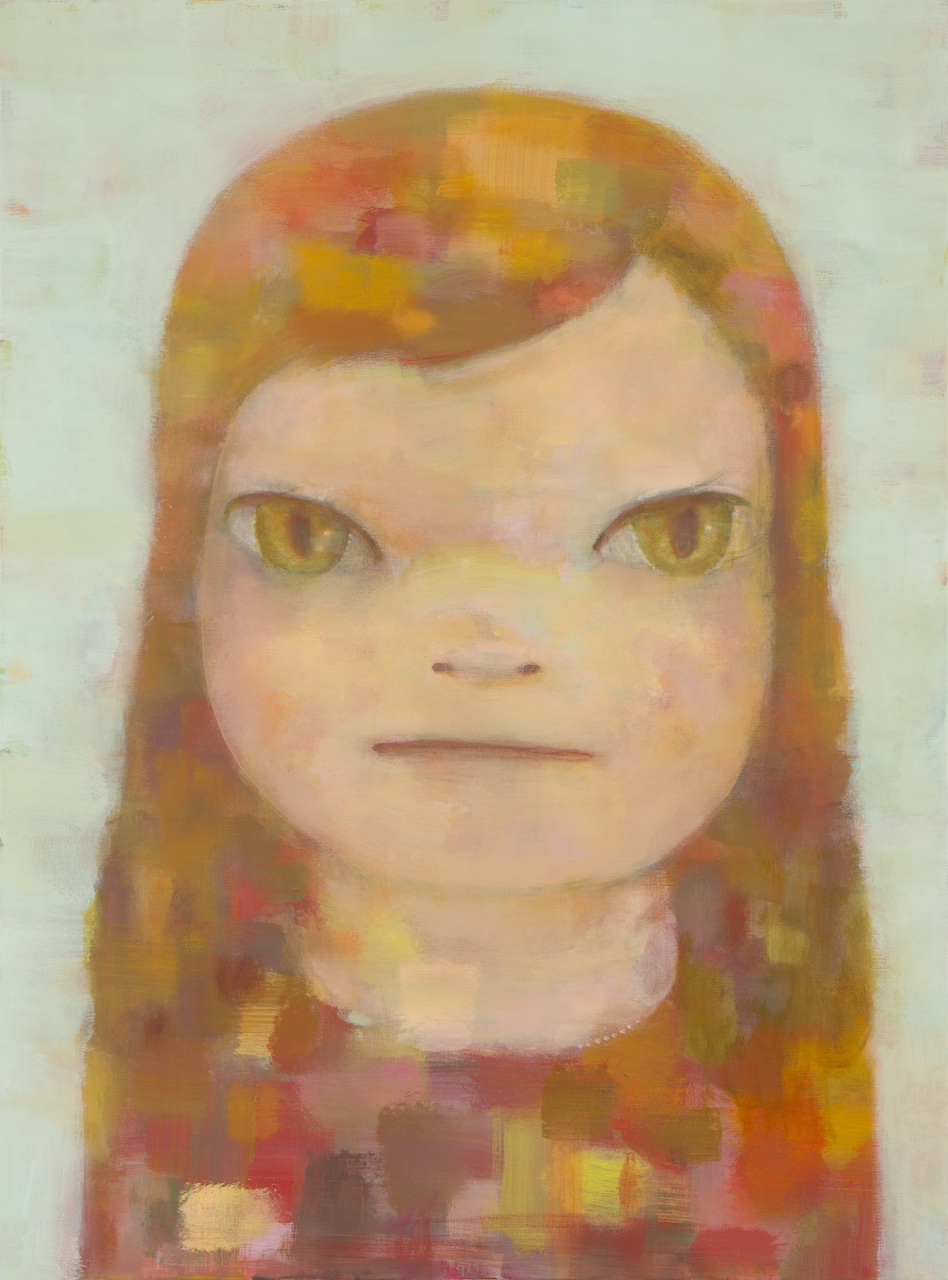5th Anniversary ExhibitionPlastic Utopia: Our New Ecosystem
Part 2: 2025.7.11 ― 11.16
Our new utopian ecosystems, created in the city
This year marks five years since opening of the Hirosaki Museum of Contemporary Art in 2020. To celebrate this fifth anniversary we present “Plastic Utopia,” which weaves together the attempts of young artists to foretell the future, with works related to the 15,000-year history of human endeavor in the Tsugaru region, in an exhibition that looks at the new ecosystems we create.
Our lives in this world unfold as part of multiple ecosystems diverse in scale. The term now extends beyond its original meaning of showing how the cycle of life works in a particular natural environment, to the structure of urban existence, influenced by the intellectual and cultural activities of humans. That is to say, we too can be the creators of the world in which we live: the social ecosystem.
Among the works presented are the paintings and embroidery of KAWAUCHI Rikako, featuring myth-like, overlapping images of food and the body that ingests it, humans and animals; an installation by WATANABE Shiori, who connects tanks serving as habitats for flora and fauna, including introduced species, setting in motion a cycle and creating a new system in which the organisms affect each other; and video works by SIDE CORE that capture skaters in various underground spaces, highlighting the existence of a vast city beneath our feet that is usually hidden from view. “Plastic Utopia: Our new ecosystem” encourages us to contemplate what our own version of a future utopia might look like.
Artists:
KAWAUCHI Rikako, KOBAYASHI Erika, Yuichiro E. TAMURA, WATANABE Shiori, SIDE CORE, KUDO Makiko, NARA Yoshitomo, SATO Tomoko, SATO Risa
Navin RAWANCHAIKUL, Jean-Michel OTHONIEL, FUJII Hikaru, OHMAKI Shinji, SAITO Lei, NAGANO Masako, HOSOKAWA Hako, HATAKEYAMA Naoya, WADA Reijiro, NINAGAWA Mika*, MATSUYAMA Tomokazu**
* Part1 ** Part2
Artists
-
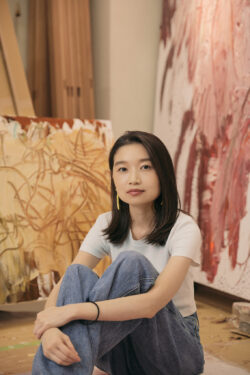 Photo: Seiichi Saito
Photo: Seiichi SaitoKAWAUCHI Rikako
Born in 1990 in Tokyo, lives and works in Tokyo. Earned an MFA in oil painting from Tama Art University in 2017. Using her interest in food as a starting point, Kawauchi takes as motifs the self and others glimpsed during communication featuring the interaction of elements such as dining, conversation and sex; creating works that revolve around the body, thought, and the murky relationship between them. In addition to drawing and painting, her practice extends to media such as wire, resin, neon tubes and marble.
-
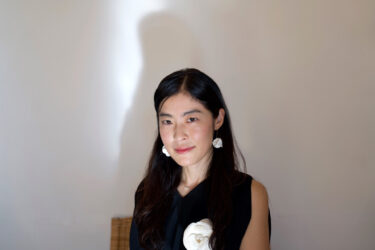
KOBAYASHI Erika
Born in Tokyo in 1978, lives and works in Tokyo. Taking inspiration from things invisible to the eye, and also from time and history, family and memory, and the traces of places, Kobayashi produces a range of research-based output comprising historical fact, and fiction. At the “Hirosaki Encounters” exhibition at Hirosaki-MoCA in 2021 she presented an installation unfolding around text. Winner of numerous awards including for her novel Girls, Making Paper Balloon Bombs, which deals with young girls mobilized for the production of incendiary balloon weapons during World War II, and graphic novel.
-
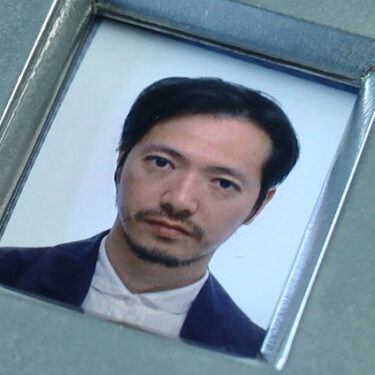
Yuichiro E. TAMURA
A line, or alternatively, attitude, starting with the letter E, by Tamura Yuichiro, who constructs multilayered narratives mixing fact and fiction, based on existing imagery and objects and employing a variety of media. Works systematized according to attitudes in modern society toward the environment, economy, ecology, ethnology, and occasionally education, hint of eros or evil.
-
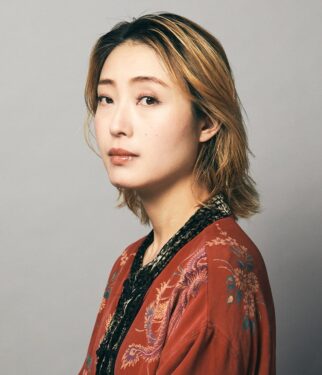
WATANABE Shiori
Born in Tokyo in 1984, lives and works in Tokyo. Earned an MFA in sculpture from Tokyo University of the Arts in 2017. Numerous installations include her best-known, Sans Room / Sun Room, consisting of tanks containing plants, fish (including endangered species), and bacteria, with water circulating between them. Themes include relationships between extinction, conservation, and eradication across all living things; the community of the nation state seen from an ecological perspective; and the workings of nature and human endeavor that underlie folk customs and festivals. Watanabe’s interest in non-human viewpoints has also led to involvement in noh theater production.
-
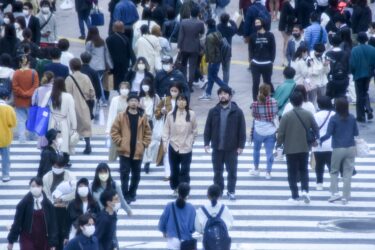 Photo: Shin Hamada
Photo: Shin HamadaSIDE CORE
Launched in 2012, Tokyo-based SIDE CORE take a street-art approach to exhibitions and performances. Members are Takasu Sakie, Matsushita Tohru and Nishihiro Taishi, with Harimoto Kazunori joining the trio as video director. Driven by a desire to extend expression further into urban spaces, SIDE CORE engage in indoor and outdoor activities with a street culture slant, with the aim of unraveling the rules of public places, encouraging shifts in thinking, infiltrating gaps, and expanding expression and action.
-
 Photo: Kenji Takahashi
Photo: Kenji TakahashiKUDO Makiko
Born 1978 in Goshogawara, Aomori; lives and works in Kanagawa. In 2002 graduated from the Oil Painting Department of Joshibi University of Art and Design. Noting the unremarkable matters and moments of everyday life—the instant her usual walking route “suddenly seems to shine” due to seasonal or temporal changes in the light, places she has visited previously that spring to mind out of the blue, rivers and water’s edges, the scent of flowers, wind, the beating of insect wings, animals, adolescent boys and girls, nighttime dreams—Kudo reconstructs reality and scenes in her mind’s eye in painted realms akin to brilliant lucid dreams.
-
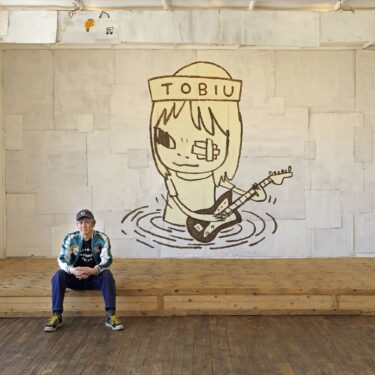 Photo: Ryoichi Kawajiri
Photo: Ryoichi Kawajiri
Art work: ©︎Yoshitomo NaraNARA Yoshitomo
Born 1959 in Hirosaki, Aomori; lives and works in Tochigi. After completing a master’s degree at Aichi University of the Arts, moved to Germany and studied at Kunstakademie Düsseldorf. Since the 2000s has staged numerous solo exhibitions in Japan and internationally, becoming one of the country’s best-known painters and sculptors. Presented three large and successful solo exhibitions in Hirosaki in 2002, 2005 and 2006 at the Yoshii Brick Warehouse (now the Hirosaki Museum of Contemporary Art) with the assistance of an executive committee consisting mainly of local residents, and an army of volunteers.
-
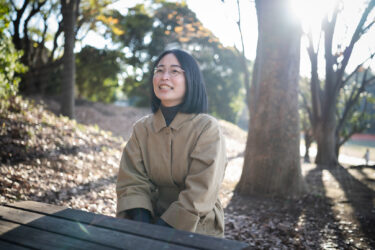 Photo: Ryusuke Ohno
Photo: Ryusuke OhnoSATO Tomoko
Born in Nagano in 1990, lives and works in Kanagawa. Obtained an MFA in Film and New Media from Tokyo University of the Arts in 2018. Sato’s art practice focuses on “narratives” that employ a lecture format. An interest in tracing Japan’s journey to modernization, and in the plurality of history, and fascination with legends and historical sites in various locations, leads her to undertake research and construct stories that move fluidly between fiction and documentation. Here she presents a new work based on her research for the “Hirosaki Exchange #06 ‘Bearing Witness to Shirakami’” project she took part in at Hirosaki-MoCA in 2024.
-
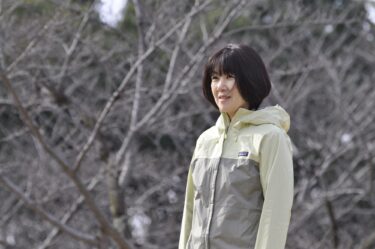 Photo: Seiichiro Sato
Photo: Seiichiro SatoSATO Risa
Born 1972 in Tokyo, lives and works in Kanagawa. Earned an MFA in design from Tokyo University of the Arts in 1999. Causes huge soft sculptures that are abstract yet familiar to materialize in indoor and outdoor public spaces. Sato makes these inflatable objects by hand herself, from constructing the model, to stitching the final work. She has also undertaken numerous collaborative projects through workshops in various locations that explore the possibilities for communication through art. Sato’s recent ventures have also included the production and translation of picture books.
-
Artists from the collection
Navin RAWANCHAIKUL, Jean-Michel OTHONIEL, FUJII Hikaru, OHMAKI Shinji, SAITO Lei, NAGANO Masako, HOSOKAWA Hako, HATAKEYAMA Naoya, WADA Reijiro, NINAGAWA Mika, MATSUYAMA Tomokazu
Highlights
1. New work from high-profile female artists
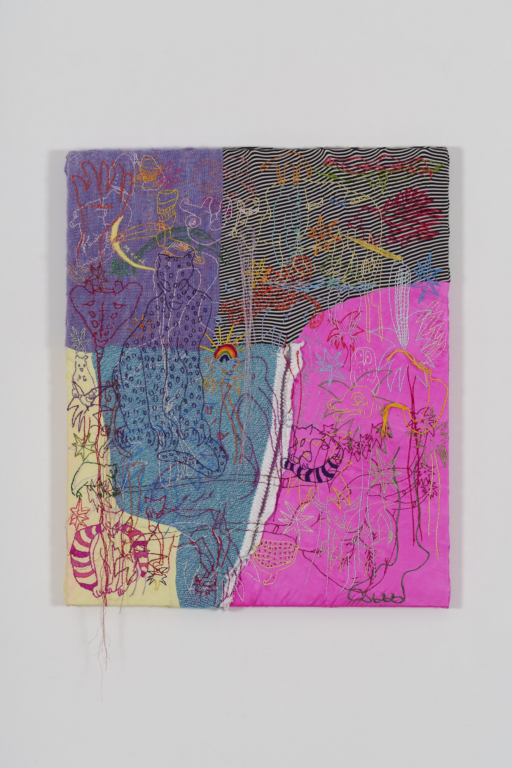 KAWAUCHI Rikako, PIC-NIC, 2024 Private Collection
KAWAUCHI Rikako, PIC-NIC, 2024 Private Collection©︎Rikako Kawauchi, courtesy of the artist and WAITINGROOM
The artists in Plastic Utopia have forged new kinds of relationship by engaging with the presence of the other—that other including their own bodies, plants and animals—and also with local history. The resulting works present myriad manifestations of utopia found not in some remote place, but the world all around us.
An awareness of things out of her personal control leads Kawauchi Rikako to incorporate images of foods ingested by the body, and her relationships with others, in a practice spanning multiple mediums, most prominently drawings that capture vestiges of powerful physical motion, and paintings in which she etches lines on layers of pigment. At this exhibition Kawauchi unveils a large-scale new work in embroidery.
Following extensive, ongoing research in Hirosaki and the surrounding area since last year, Sato Tomoko presents a new work in lecture format, with a narrative focus. The stories unfolding therein cover subjects such as the vestiges of the former Eighth Division (Imperial Japanese Army) once stationed in Hirosaki; and the history, natural surroundings and religious beliefs of Western Aomori’s Tsugaru region, in connection with the legend of Anju* on Mt. Iwaki.
*A fictional character in the medieval Japanese legend “Sansho dayu.” Captured by slave traders, Anju suffers a tragic death after helping her younger brother Zushio to escape. In the oral tradition of Tsugaru “Oiwakisama Ichidaiki,” based on this legend, Anju is said to be the deity of Mt. Iwaki.
2.Chance to learn more about the history and ecology of Hirosaki and the greater Tsugaru region
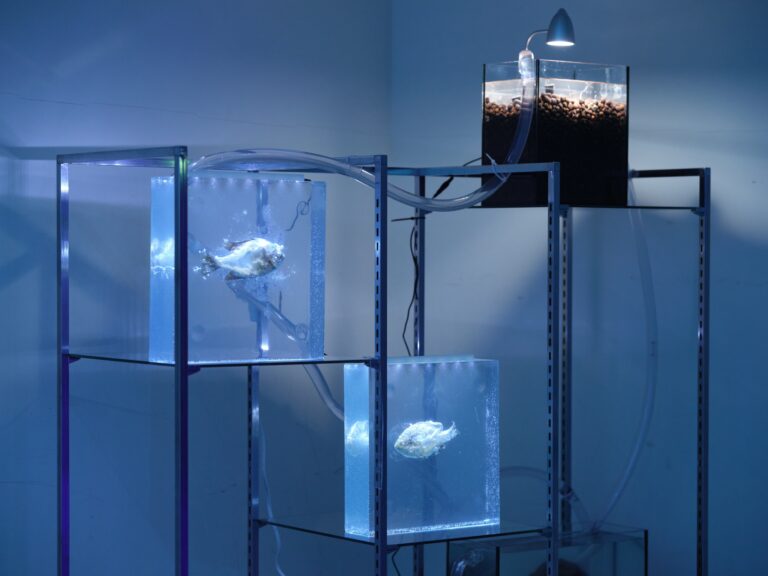 WATANABE Shiori, Composed Nation, 2024
WATANABE Shiori, Composed Nation, 2024Photo: Naohiro Ogawa *Referential image
Photo: Naohiro Ogawa
Watanabe Shiori turns her attention to ecosystems old and new that live and breathe alongside our own day-to-day existence. In this exhibition, she focuses on organisms found in the local area, connecting tanks for raising plants, fish, and bacteria, and circulating water to give visual expression to ecosystems in a new work in her Sans Room / Sun Room series. Prehistoric links to the continent, wider Asian region, and islands of the Pacific can be found in Tsugaru, said to have the oldest and northernmost vestiges of rice cultivation in eastern Japan. And in the imported flora and fauna that settled in the region during its modernization, we may begin to see our own world, in which systemic lines are drawn between organisms sharing a habitat, dividing those organisms into “endemic” and “exotic.”
3. Bonus displays from the collection and local historical and cultural resources that respond to the exhibition
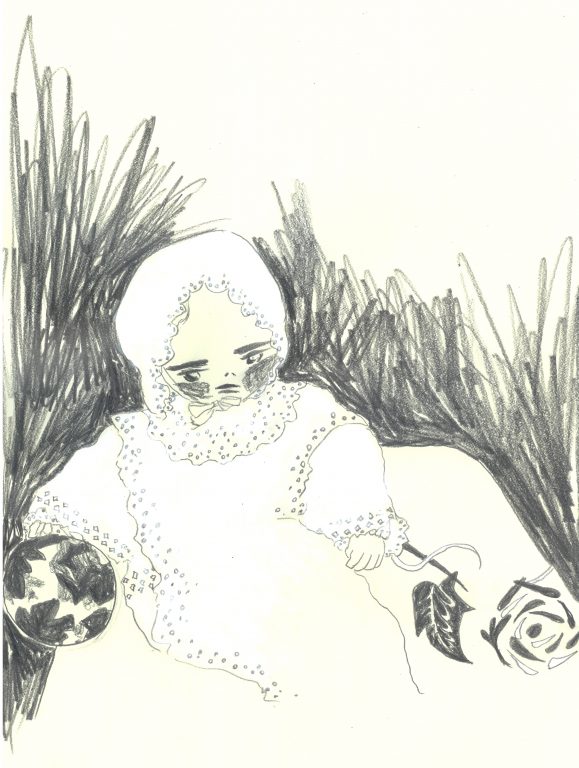
Collection of Hirosaki Museum of Contemporary Art
© Erika Kobayashi, Courtesy of artist and Yutaka Kikutake Gallery
Since opening in 2020 the Hirosaki Museum of Contemporary Art has amassed a collection of work by present-day artists, mainly on commission. The diverse lineup of Plastic Utopia incorporates items from the museum holdings that respond to the exhibition’s theme. Highlights include works emerging from encounters with the natural features, history, folk customs, and culture of the Tsugaru region, including Kobayashi Erika’s installation with its unfolding story, part-fiction, part-documentary, and themes of the life of her grandfather, who was an army doctor for the former Eighth Division of the Imperial Japanese Army; and that of her Hirosaki-born father, plus local history; as well as prints by Ohmaki Shinji inspired by earthenware from the Jomon era (about 16,000 to 2400 years ago), Aomori being home to numerous Jomon archaeological sites. The display of material connected to local history and culture such as kogin-zashi embroidery and prehistoric earthenware alongside works by contemporary artists also sheds light on the Tsugaru region’s many centuries of cultivating creativity, and the history of human migration and interaction.
Selected works on display
Featured works include Girl from the North Country (Study) (2025), a new painting by Hirosaki-native Nara Yoshitomo, plus other works highlighting the connection between the artist and his hometown such as the drawing created when Nara made a guest appearance at H-MOCA LIVE “A night OWL like a FISH” held last year at the Museum studio, and a reproduction of the rock café “JAIL HOUSE 33 1/3” that Nara created with his friends during his high school days in Hirosaki.
Outline
- Date:
Part 1|2025.4.4 (FRI) ―7.7 (MON)
Part 2|2025.7.11 (FRI) ―11.16 (SUN)
Closed: Tuesdays (except on Apr. 15, 22, 29, May 6, Aug. 5 and Sep. 23), May 7, Jul. 9, 10 and Sep. 24
Opening hours: 9:00-17:00 (Last admission 30 minutes before closing)
Venue: Hirosaki Museum Contemporary Art - Organizer: Hirosaki Museum of Contemporary Art
-
Special Sponsor: Tsumie Culture Fund, Starts Corporation Inc.
Sponsor:OBAYASHI CORPORATION, NTT FACILITIES, INC.
Under the patronage of: The To-o Nippo Press, THE DAILY TOHOKU SHIMBUN, THE MUTSU SHIMPO Press, Aomori Broadcasting Corporation, Aomori Television Broadcasting Co., Ltd., Asahi Broadcasting Aomori Co., Ltd., Aomori Fm Broadcasting, FM APPLE WAVE, Hirosaki City Board of Education
- Admission [tax included]:
Adults 1,500yen (1,400yen)
University & College Students 1,000yen (900yen)
* ( ) Price for a group over 20 people
*Hirosaki residents receive a 500 yen discount off the admission price listed above (not valid in conjunction with any other offers or promotions).
Free of charge for high school students and under;
international students in Hirosaki city; citizens of Hirosaki over 65, the disabled and one accompanying attendant



